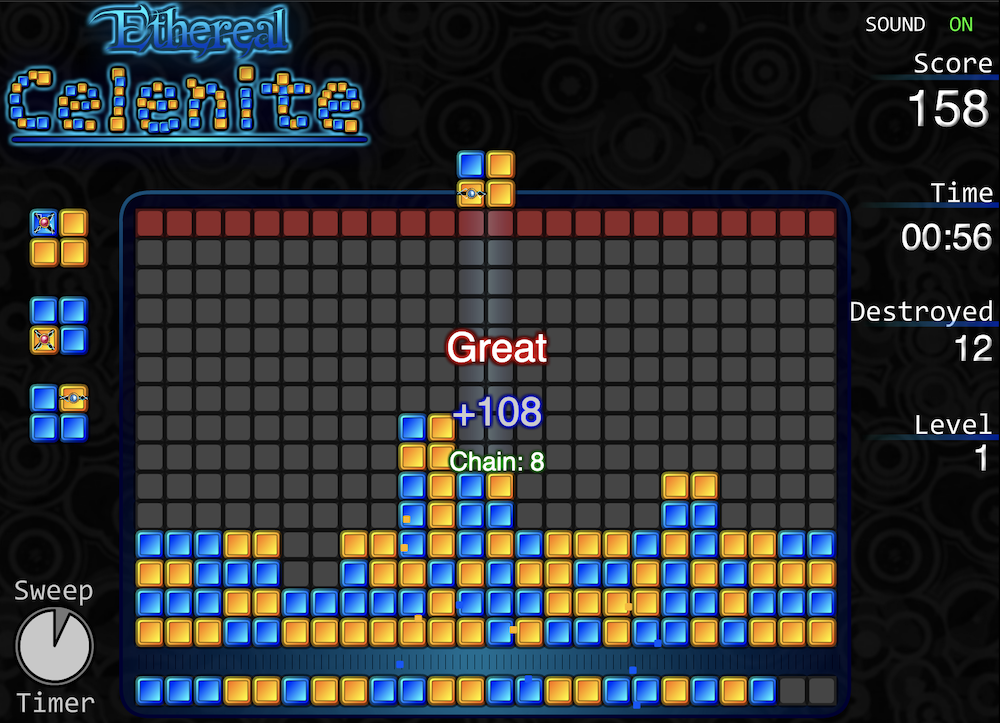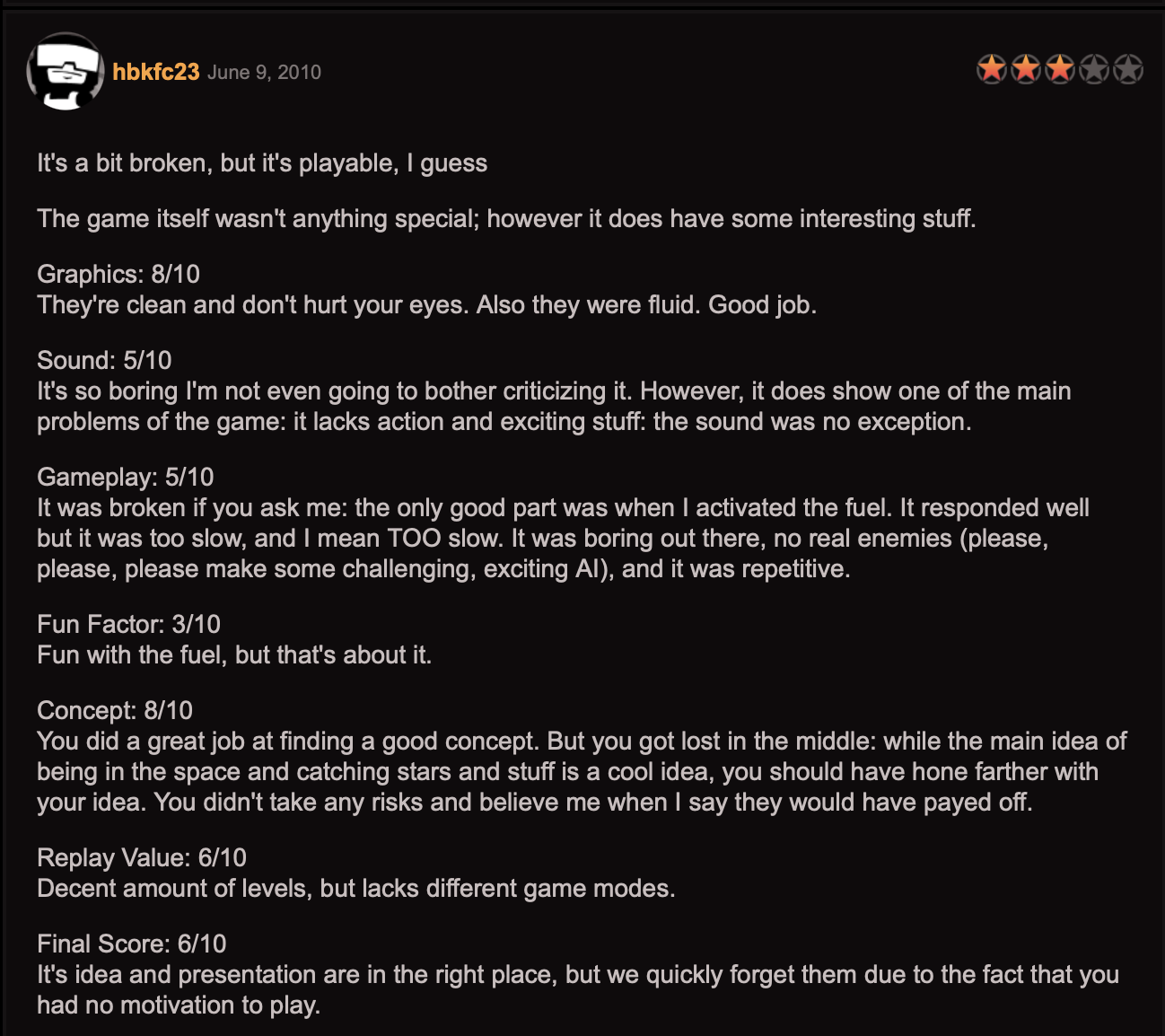Associate Teaching Professor
Carnegie Mellon University

See the discussion of this post on Hacker News.
In college, I made video games that ended up paying my bills for a few years. They were played millions and millions of times. But I wasn't actually much of a gamer, so how did this happen? And why did I stop?
It started when I met my friend and eventual roommate, Jo. We were in the same computer science courses, and he occassionally would talk about the games he was working on. One day I took the bait and he went into a several hour long spiel where he showed me the games he had made, how he made them using Adobe Flash, and the dashboard that showed him exactly how much he had made that day from advertisements. I think that day he had made maybe $0.25 from people playing his games.
I was intrigued though since he was the only other person I'd met that coded for fun outside of class. Several months went by of us occassionally talking about his game projects, but I hadn't followed suit with making my own games.
Until... one day he made over $1. Count me in!
I started to learn Flash. The oddities of the IDE and language (ActionScript 2) had a bit of a learning curve, though it wasn't bad. Years before I had spent a lot of time tinkering with OpenGL and SDL so the concepts came easily.
But what game should I make that lends itself well to Flash? It needs to be 2D with a short game loop, have high replayability, and be effortless to learn. I already had a hard drive of unfinished programming projects, so I also needed it to be of limited scope. Oh, and I have no artistic skills.
The goal was to release my first game in a month. It would let me test the viability of Flash and game development. I spent a few days just learning the basics while scouring the web for inspiration.

I decided I'd mimic one of the many "keep jumping to get as high as you can games". It really didn't get much more basic. I even found a tutorial to make one! I'd take it from there and add my own twist. Sounds like a plan, right?
Lesson: Polish is everything. Any time I thought the game was "done", my friend would walk over and point out some minor feature that I should add. It would annoy me to no end. But each time I'd go add it, and sure enough, it immediately made the game feel so much better. This happened dozens and dozens of times.

It took about six weeks to make Stay Up.
Lesson: The meta stuff takes as much effort, if not more, than the core game. I mean the menus, instructions, release materials, API integrations for advertisements and high scoreboards, and so on.
Time for the release! The way that Flash games worked back in the day, you'd upload it to a few websites (e.g., Newgrounds and Mindjolt), then people would extract it and upload it to their own websites. Stay Up spread to several hundred quite quickly.
It might not look like much, but people were playing my game! It was bringing in over $100 a day in its prime. I was hooked. Time to make more games!
My friend had helped me a lot with Stay Up, so for my second game I wanted to prove "independence". I wanted to make another simple, unoriginal game as quickly as possible.
Lesson: Stop planning and start doing. I run into analysis paralysis with ideas a lot. After some initial planning, it seems to always be more valuable to bring something to life that can be iterated on, rather than trying to plan out the perfect game.

My second game was Tunnel Syndrome. Yet another infinite tunnel game where you move left or right to avoid the walls. That is it.
The release went ok, peaking at about $70 a day, though it quickly fell. In my silly pursuit of releasing it as fast as possible and without any help, the game lacked any luster. Polish really is important.
I was eager to keep the momentum going and release another game before Christmas.

My third game, Celenite, was a lot of fun to make from a technical perspective. My ambition was much higher this time as I tried to replicate a PlayStation puzzler called Lumines.


But I once again released it before it was ready. There were bugs, a lot of actions had no visual or audio feedback, and the art looked half finished.
Jo got inspired by my fast-paced grid-based puzzle game and began working on his own. His variation was incredibly addictive. He made it in less time, with less art, and it was far more popular. See, design matters!
Around this time, I moved into the dorms. I was able to skip class and work on games for many, many hours without ever seeing the sun. In fact, I spent the entire semester making 50+ prototypes. Though without releasing anything. Analysis paralysis strikes again.

For my fourth game, I wanted to create something original. I ended up releasing Chaos Star months later, and it flopped. Big time.

Lesson: Chasing novelty for the sake of novelty is silly. Gameplay mechanics often don't work out the way you plan in your mind. I find that bottom-up design is much more effective.
I went on to release several more games over the next 12 months. Which one did the best? The sequel to Celenite, which Jo helped with.
So why did I stop making games? College came to an end. Then I moved away for grad school, I didn't have Jo yelling at me to work on games, and Flash began its slow decline. It was fun while it lasted...
If you enjoyed this, take a look at these other posts: